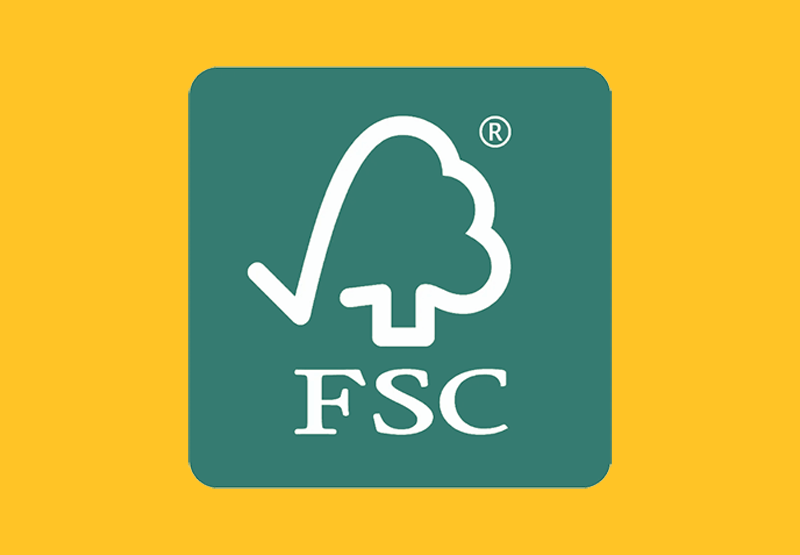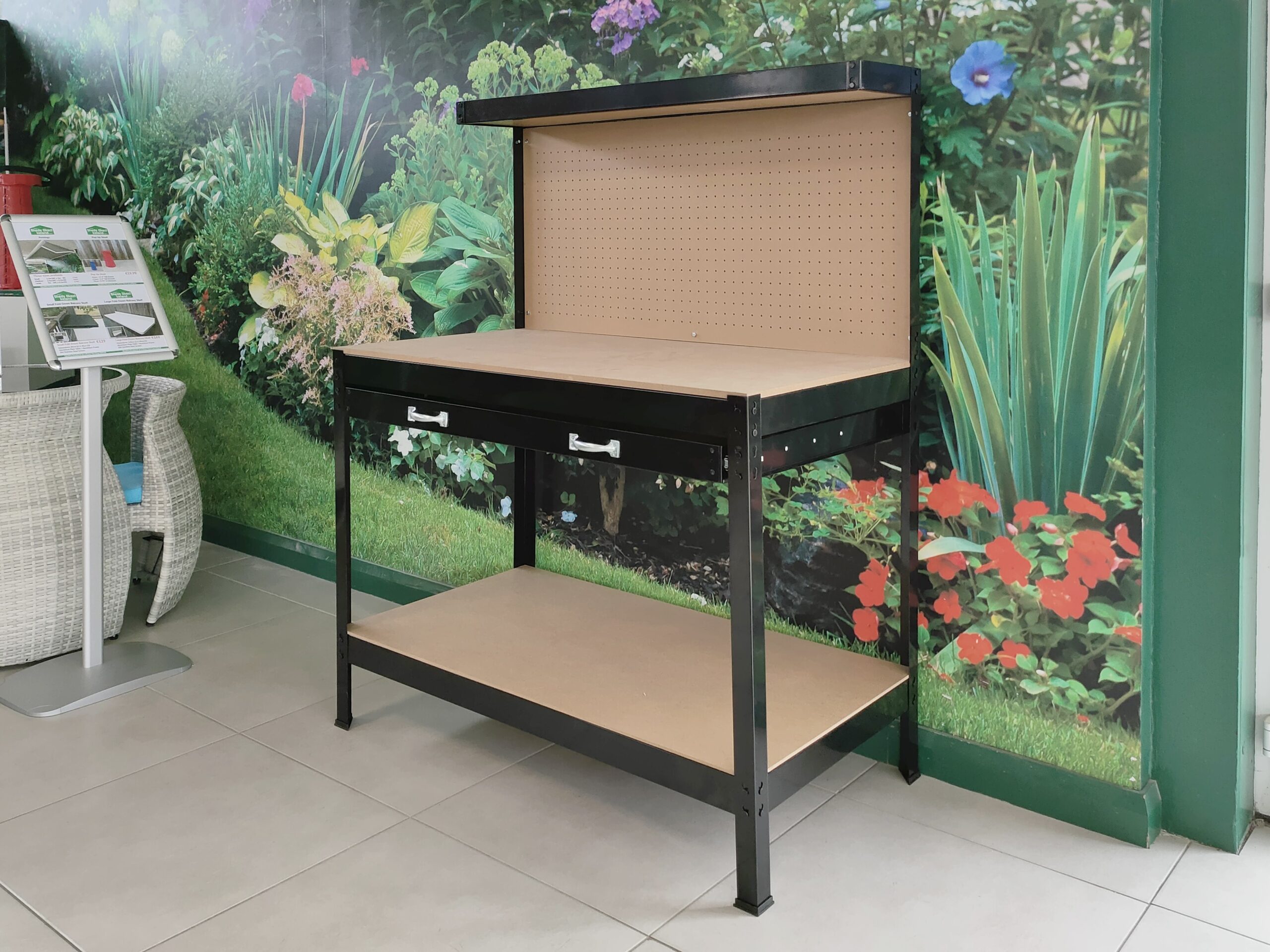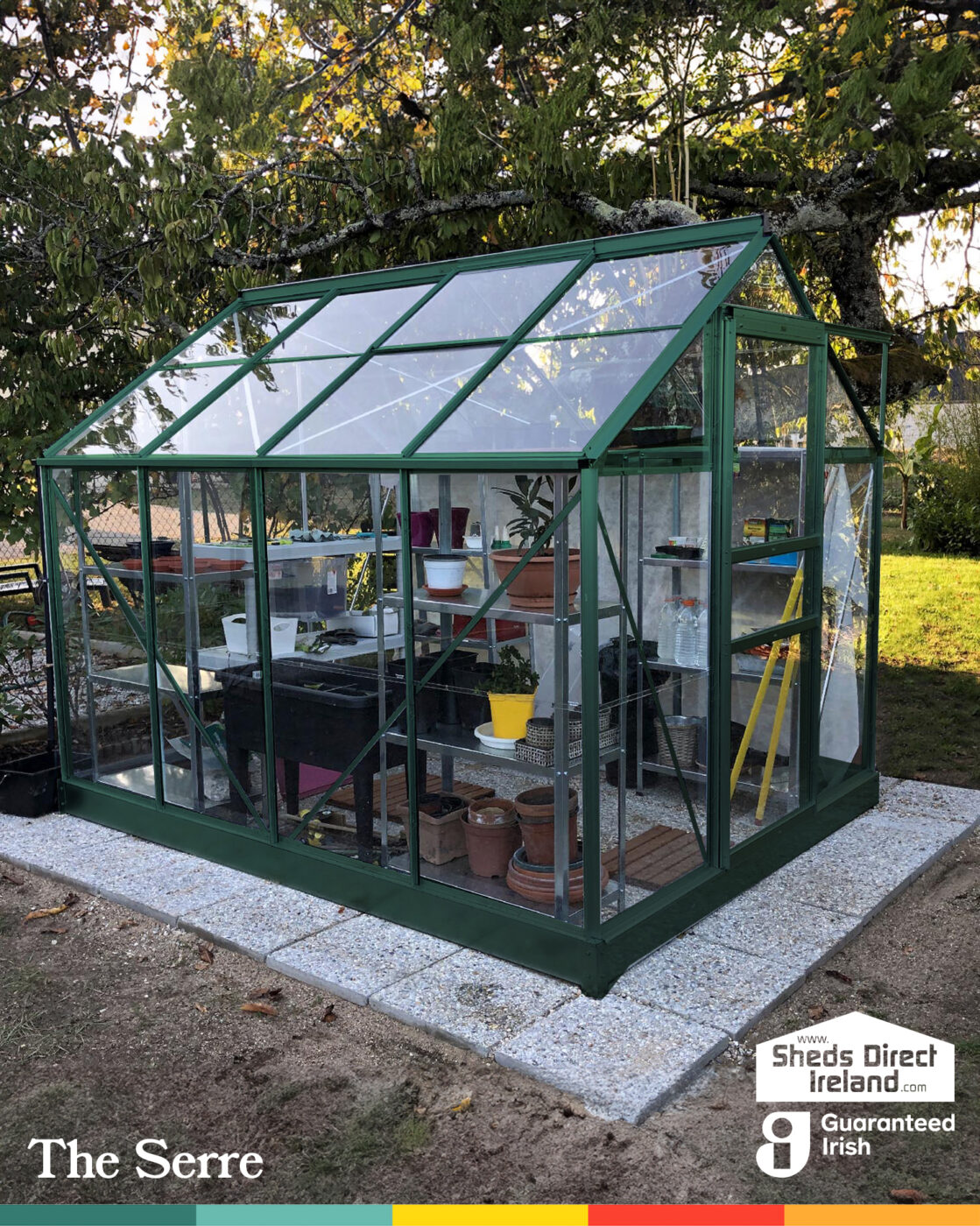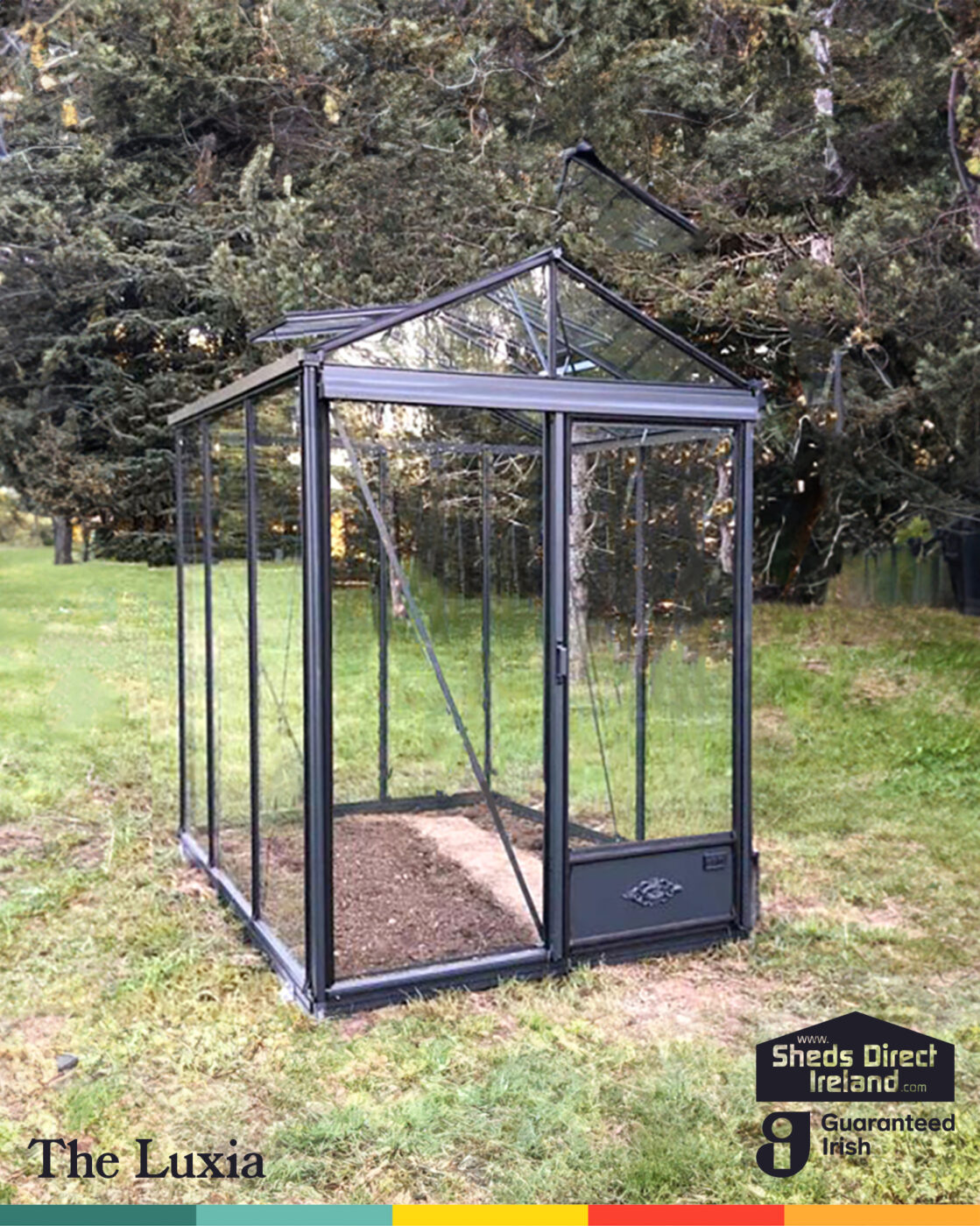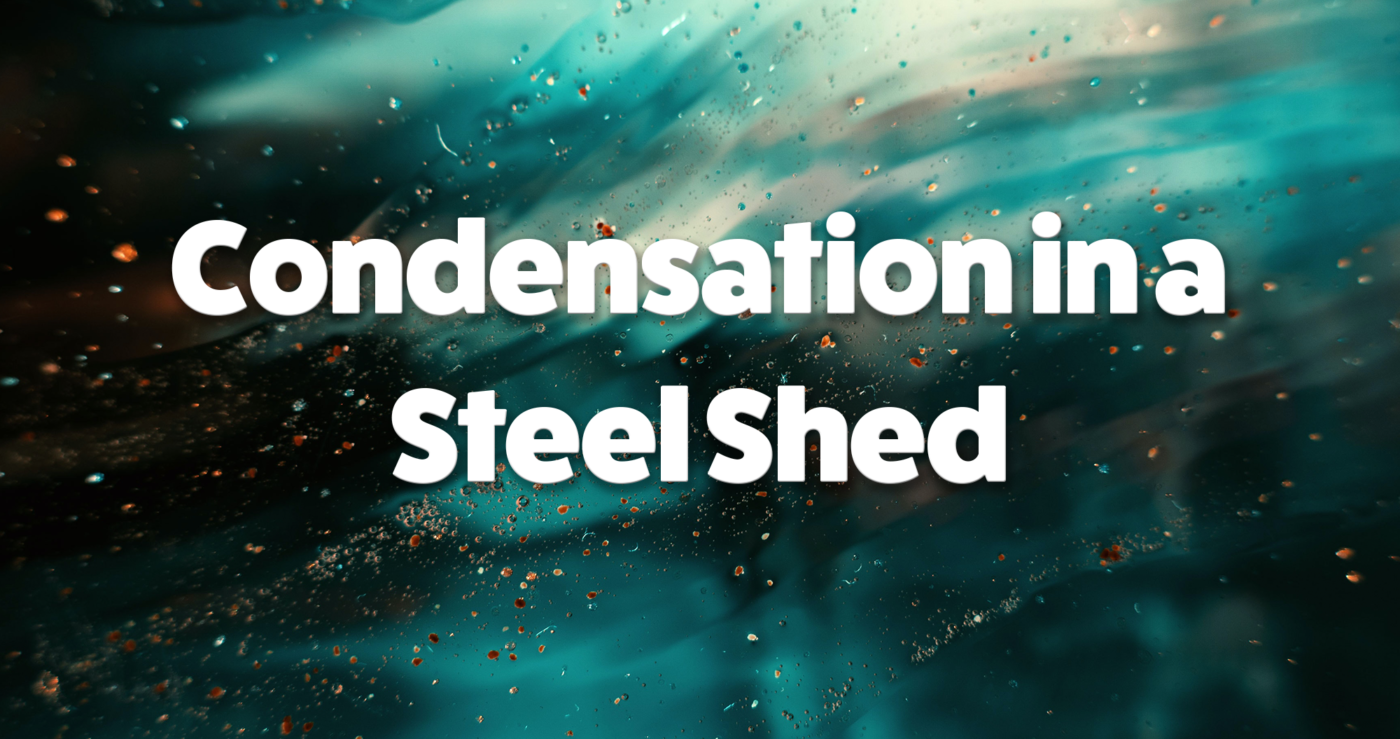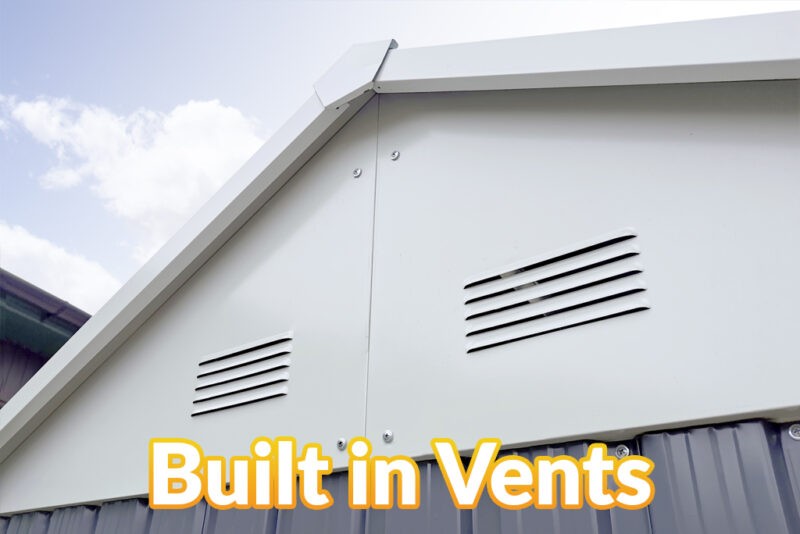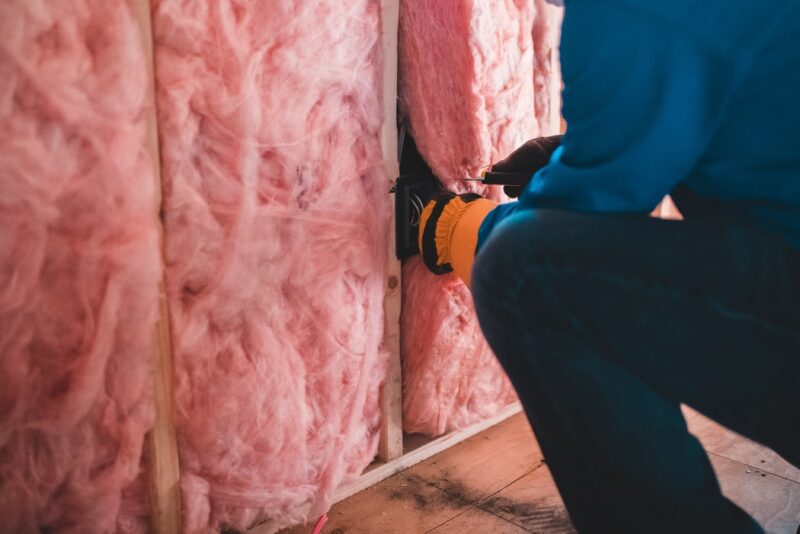Uncategorized
Condensation in Steel Sheds (2023 update)
Condensation in Steel Sheds
Condensation in a steel shed can be a major source of annoyance. It can damage your stored goods and in particularly bad instances, it can invite the growth of moulds or fungus. So how do you prevent your shed from getting affected by condensation? Here’s our guide to reducing condensation. We look at cutting it off before it forms and how to deal with it if it’s already there. Strap in, beautiful, we’re about to fill your lovely noggin with some great condensation knowledge.
What is condensation?
We all have a vague idea of what condensation is, right? The droplets on a window? The ‘sweat’ inside your tent when you’re camping?
Specifically, condensation is when water vapour becomes a liquid. The vapour in the air becomes colder, it condenses and it forms into droplets. Think about when you have a shower. As the steam rises from the hot water, it eventually comes in contact with the cold surface of say, the mirror which causes it to fog up and beads of water will appear. After your shower, the condensation will begin to evaporate back into the air.
What causes condensation in steel sheds?
For sheds, it’s the exact same principle. Your shed will heat up during the day. The heat then gets trapped inside the shed. At night, the outside of the shed will then become cold. Then, the warm vapour in the shed will rise and come in contact with the cold panels of the shed. Bingo-bango, water droplets are formed.
How to prevent condensation in steel sheds
Lay your base correctly (i.e. include a damp-proof membrane)
Here at Sheds Direct Ireland, we can’t stress enough how important it is to lay your base correct. By doing this, you avoid a lot of problems in the future. First and foremost, when it comes to preventing condensation in your steel shed, we would strongly recommend laying down a damp-proof membrane at the beginning of the base laying process. This will help prevent moisture rising through the base during the colder months. In turn, this will greatly reduce the chances of condensation forming in the first place. Remember: The damp-proof membrane needs to go under the base, not under the shed.
Once you have this sorted, you can get going on laying your base. There are numerous ways to lay a base for a steel shed and we’ve a guide on how to lay a base for a steel shed right here. You can also see our post on what makes a good base (and what makes a bad one) in our other guide: Good bases for Steel sheds (It’s all about the base)
If you do nothing else, put a damp proof membrane under your solid, level base. While it doesn’t guarantee that condensation will form, it is the best starting place to minimise the chances of it occurring.
Keep that shed ventilated
Ventilation in your steel shed is essential. The great news is that you need to do very little here; keep your air vents clear and unblocked. If the vapour can escape, condensation can’t form. Most of Sheds Direct Ireland’s Steel Sheds come with built-in ventilation of some sort (we look at the ones without below!)
However, keeping your vents clear doesn’t just mean looking after the inside. You’d be surprised how many people build their sheds right up against a wall (you shouldn’t do that) or against vegetation, and who are then surprised that condensation is forming in their shed. If the air can’t flow through the shed, you’re going to get condensation.
So, keep your vents clear (on both sides), cut back any encroaching bushes, trees etc and make sure that air can flow throughout your shed without impediment.
What if my shed isn’t ventilated?
If your shed isn’t ventilated, it may have other methods of dealing with condensation – or it may need more attention to keep condensation down. Our Heavy Duty Sheds, for example, don’t have any vents. They do have ant-con roof linings however, which absorb and run off moisture. Sheds that have no vents and no anti-con roof lining will require regular airing out – and you should be very careful about putting anything that generates heat into a steel shed that has no vents.
Be aware of items that generate heat (e.g. White Goods)
The main reason that people buy a shed is for general storage. However, a growing number of people use their sheds as utility rooms. People are moving washing machines, dryers and other white goods out of the house and into the shed. This is great for the house, however, it’s not so great for the shed. These items generate heat. As we’ve already stated, this heat rises, comes into contact with the colder metal panels and forms condensation. White goods, especially dryers, can create vast amounts of condensation. As such, we don’t recommend that they are placed into steel sheds without proper preparation (more on this later)
If you plan on putting something that will heat up the inside of your shed, you will need to have a damp-proof membrane installed, as well as insulating your shed. Even then, it’s not a complete solution and you may need to monitor you shed and make adjustments as necessary.
Don’t forget that you also generate heat! If you’re using your shed as a workspace, you may need to insulate the shed, as your body-heat and any heaters that you might use in there will create a greatly warmer interior.
Insulate your Steel Shed
The previous points made already allude to this. Insulating your shed will make a massive difference in preventing condensation in your steel shed. If you have items in your shed that generate a lot of heat such as a washing machine or dryer, you may need to use more drastic measures. If you have a situation where you will be storing items that could get damaged if they come in contact with dampness, insulating your steel shed is realistically the only way forward. Luckily for you, we have a fantastic guide on the Insulation process as a whole which you can find right here.
We cannot definitively say whether you need to insulate your shed or not, but if you don’t want any moisture whatsoever in your shed, you should definitely look into insulating it.
Using Moisture Absorbers
You might have seen small Moisture Absorbers available in home stores. They’re generally small, self-contained plastic pots. Some are more involved than others, but generally you just pop the lid, place it in the shed and off you go. Which.com have a great piece about moisture absorbers, with one of the main take away points being that they’re great for small cases of moisture, but essentially useless in places with washing machines, dryers etc.
These absorbers can be helpful with condensation in steel sheds in the short-term, but we wouldn’t recommend relying on them in the long term.
It’s also worth noting that many of these absorbers can be toxic and shouldn’t be used around small children or pets.
The final word
Condensation in steel sheds can be frustrating for everyone but it can be avoidable. Performing simple steps such as laying down a damp-proof membrane and keeping the air vents clear can make a huge difference to the condensation in your shed. However, if you have items stored in your shed that are going to generate heat, moisture and condensation are going to appear. If this is the case, insulation and dehumidifiers should be looked at.
If you’ve any specific questions, call us at 01 864 4247 or message us on Facebook and we might be able to help more in person.





